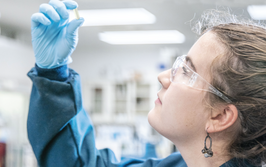
The Elderly Are the Future
Drug delivery devices must take into account the needs of older adults
A long life is often considered a badge of honor that can be summed up as a wealth of experience, but common consequences of living to a ripe old age are an increased reliance on pharmaceutical products and a decline in vision, hearing and dexterity. The pharma industry has a duty to ensure that drug delivery devices are designed to consider the challenges that affect elderly patients, therefore, enabling them and their caregivers to stay in control of their therapeutic regimens.
Any drug delivery device should go through extensive human factors testing and analysis with patients of all ages and abilities. Consider, for example, an elderly patient suffering from rheumatoid arthritis – how would they handle your drug delivery device?
As the trend for self-administration in homecare settings continues, patients are being afforded a greater role in deciding which delivery systems offer the best usability features for them. Today, there are many different types of syringes and autoinjectors available – and wearable devices are also an option. Patch injector systems, for example, are designed to hold high-volume doses of sensitive biologics and offer subcutaneous, pre-programmable electronic injection – delivering drugs over an extended period of time and, hopefully, boosting patient compliance. Other devices give visual and audio cues to help signal that drug delivery is complete – these can make a real difference to patients and give them confidence that they have administered their medicine correctly. Whatever the technology platform, patient-centric design is not just good for specific patient populations – it can also give pharmaceutical manufacturers an edge in product differentiation.
We believe that the pharma industry is beginning to better consider the needs of the elderly. In part, that’s because the older adult patient is changing the trajectory of the pharma industry by encouraging companies to design drug delivery systems that are more user friendly. As the largest growing demographic, the over 65s are commanding the industry to adapt and meet their changing needs. By striking the essential balance between a high-quality drug containment system and a user-friendly delivery system, pharmaceutical companies can help to improve comfort and experience for patients managing chronic conditions, while facilitating the safe and effective delivery of innovative drug products.
Erin O’Brien is Vice President, Product Management & Marketing Operations at West Pharmaceutical Services.
Chris Evans is Vice President, Innovation, West Pharmaceutical at West Pharmaceutical Services.


















